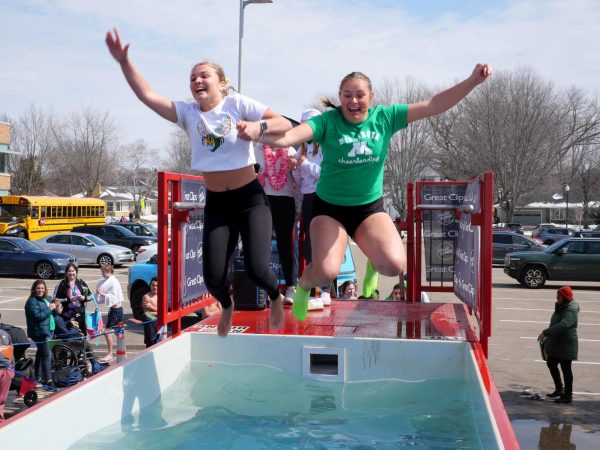Is Netflix’s “Hillbilly Elegy” as rotten as critics say?
December 6, 2020
DISCLAIMER: The movie is rated R for “language throughout, drug content, and some violence,” and viewers should use discretion while watching. Domestic and verbal abuse, along with excessive, sexually-explicit swearing are common throughout the length of the film and will be mentioned in the following article as well.
With a 25% rating from Rotten Tomatoes critics yet an 83% rating from viewers, the 2020 film “Hillbilly Elegy” is shaping up to be as controversial as J.D. Vance’s memoir, of the same name, published in 2016. Initially receiving less than stellar reviews from critics upon its release in theaters, it was the number one movie on Netflix the first day of its release and number three in following days. Throughout the film, vignettes of Vance’s (Gabriel Basso) childhood in the Appalachian Mountains of Kentucky and hometown of Middletown, Ohio in 1997 are blended with Vance’s present role as a law student at Yale University in 2011. In the midst of Interview Week (where Vance is competing for prestigious summer internships), a call from his sister Lindsay (Haley Bennet) urges him to come home after his mother Beverly (Amy Adams) has overdosed on heroin.
While struggling to find a rehabilitation center for his mother due to her lack of health insurance, Vance fights to find pity for her due to her abuse and drug addiction in his childhood. In a raw, intimate way, the film not only dispels romanticized ideas of drug usage, but shows how usage takes a toll on everyone involved. Eventually, Beverly’s emotional instability, drug dependency, and constantly shifting boyfriends and homes worsened to the point of Vance moving in with his grandmother, Mamaw (Glenn Close). Vance credits his Mamaw with saving him from a fate similar to his mother’s floundering path, as she uses tough love to scare off bad friends, push him to excel in school, and become a hard worker at home and in his new part-time job.
Many critics argue that “Hillbilly Elegy” “perpetuates stereotypes” (The Independent), is “Oscar-bait” (Rahul Desai), and causes you to “wallow in [their] despair” (Rachel Wagner). Although I agree that the film significantly plays up the improper grammar and cussing of the Appalachian English dialect, I argue that these critics miss the point of the film in an attempt to analyze it through the terms of perceived literary merit. “Hillbilly Elegy” provides a candid, insider viewpoint into the world of the working class. Many urban Americans are so far removed from the struggles of their fellow rural citizens that when it is portrayed in a real, rather than romanticized, way, they lack the discernment to know when situations are dramaticized.
Additionally, “Hillbilly Elegy” is a memoir. It is not the result of Hollywood’s screenwriters and imagination. It represents the real-life experiences of J.D. Vance as candidly portrayed in his book. Many critics acknowledge the stellar acting jobs of Glenn Close and Amy Adams, yet give the film bad reviews due to its content, or claimed lack-there-of. In doing so, these critics invalidate the experiences of J.D. Vance, his family, and the working class of rural America by implying his past is not worth sharing, which reveals the extreme rift between urban and rural communities in modern America.
Additionally, as I saw the once prosperous Middletown decline with the closure of steel factories, I was reminded of Minnesota’s Iron Range. In good times, the factory owners or mining companies provided secure housing, well-funded schools, and thriving local economies. However, sole dependence on natural resources meant that as the world market shifted in the 1970s, factories and mines began to close—and nearly entire towns lost their jobs. Those who could afford to move did so, and left behind a class of working poor and deteriorating cities.
Both of my grandparents grew up during the height of the Iron Range; my grandmother was born in Coleraine and my grandfather in Bovey, where both their parents were employed by the Oliver Mining Company. Upon asking them about their childhood, I hear stories of busy towns, an abundance of school activities, and small-town communities connecting through sports. Now, when we drive through Coleraine, you’re hard pressed to find even a gas station. Similar to Vance, I am only two generations removed from the height of Minnesota’s iron mining—yet have drastically different opportunities available to me largely based on the privilege of a college education which my grandparents and parents received. In Minnesota’s modern times, these rural regions are overlooked and the people often condescendingly referred to as “rednecks,” yet they were a vital part of Minnesota’s economy which allowed the growth of urban cities.
Although “Hillbilly Elegy” may just be Oscar-bait to critics, students of Edina High School must not immediately dismiss the film in favor of others. With a large number of EHS students travelling to cabins in Northern Minnesota during breaks, the disparity between suburban Edina and rural counties are important to bring to the forefront of current political discussion. The increasing divide in educational opportunities between rural and urban America reveals another way in which America’s citizens are becoming further polarized—an issue which is often missed. Even if not a first choice for entertainment, I urge the students of EHS to take time to watch “Hillbilly Elegy” and explore J.D. Vance’s perspective for themselves.








Gordon Scott • Jan 25, 2021 at 4:11 am
Agree with the thrust of your article about the disparity between the pro critics and audience views of Hillbilly Elergy on R.T. I read a couple of the pro critics reviews, and one of them admitted to not reading the book, but that didn’t stop him commenting on the differences of the book and film. I presume he read the back cover or read some other reviews to provide some “background”. Anyway I loved the film, and the two female leads gave great performances. Coming from an English working class family, I could relate to the difficulties of moving around the country following jobs and just about keeping ahead of industrial decline led by the Tories, and a Labour Party who seemed less concerned with working class issues and more with radical causes and EU friendly policies.